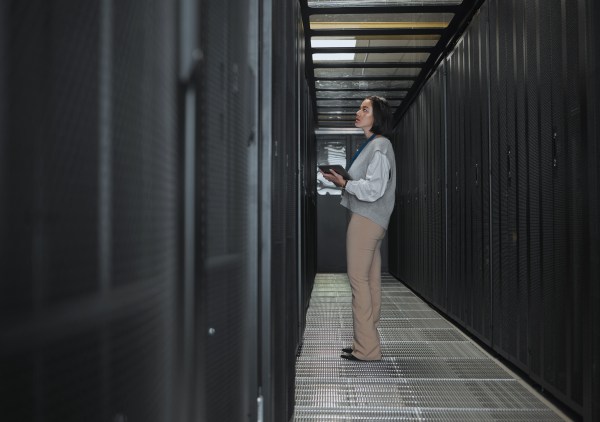The internet of things (IoT) is arguably the most exciting technological development since the cloud. It has led to significant changes in IT architectures. In particular, the IoT has increased the level of data processed locally rather than in centralized data centers. This in turn has had a significant impact on the colocation sector. With that in mind, here is a quick guide to what you need to know about the internet of things (IoT) and colocation.
Understanding the Internet of Things (IoT)
The internet of things (IOT) is a network of devices capable of collecting, processing, and/or storing data using their own autonomous resources. Typically, IoT devices are equipped with sensors that respond to a particular stimulus. When this stimulus is detected, the IoT device responds in accordance with pre-defined rules.
In a basic IoT setup, the device itself will perform all of the processing and output the result. In more advanced IoT setups, the device may perform the processing. Alternatively, it may forward it to another environment to be processed there. The decision will typically depend on how quickly the data is required.
Understanding colocation services
Colocation services provide managed data center infrastructure that businesses use to house their own equipment. For most of the sector’s history, its focus has been on centralized, large-scale data centers. Now, however, the growth of the IoT is prompting colocation service providers to implement localized, small-scale data centers. These are generally known as edge data centers.
Understanding the internet of things (IoT) and colocation
At first glance, the internet of things (IoT) and colocation may not seem like a natural partnership. Traditionally, colocation has been very much focused on centralized data centers. This is the exact opposite (conceptually) of what the IoT is supposed to be.
In reality, however, the internet of things (IoT) and colocation have developed a perfect partnership. This is because colocation service providers have adapted to the new way of computing. Here is an overview of the five main steps they have taken to assimilate it.
Scalability and flexibility
Colocation providers are investing in modular designs and infrastructure-as-a-service (IaaS) offerings. This allows organizations to scale their IoT deployments seamlessly without the need for significant upfront investments in hardware or infrastructure upgrades.
Edge computing capabilities
Colocation providers are establishing edge locations within their facilities or partnering with edge computing specialists. This helps facilitate ultra-fast data processing at the edge of the network to satisfy the demands of IoT applications that work in real-time.
Enhanced connectivity options
Colocation facilities are enhancing their connectivity options to support the diverse requirements of IoT deployments. This includes offering high-speed, low-latency connectivity solutions such as direct interconnection with major cloud service providers (CSPs), internet exchange points (IXPs), and private network connections.
By providing robust connectivity options, colocation services enable IoT devices to seamlessly communicate with cloud platforms, data analytics tools, and other IoT devices, facilitating efficient data exchange and processing.
Security and compliance measures
To address the security concerns associated with IoT deployments, colocation services are implementing advanced security measures and compliance frameworks. This includes deploying physical security controls such as biometric access controls, surveillance cameras, and secure cages to safeguard IoT infrastructure and data.
Additionally, colocation providers are adhering to industry-specific compliance standards such as PCI/DSS HIPAA and GDPR to ensure data protection and regulatory compliance in IoT environments.
Data management and analytics support
Colocation services are also adapting to support IoT by offering advanced data management and analytics capabilities. This includes integrating data analytics platforms, machine learning algorithms, and AI-driven tools within colocation facilities to enable real-time data processing, predictive analytics, and actionable insights generation from IoT data streams.
By providing robust data management and analytics support, colocation services empower organizations to derive valuable insights from their IoT deployments, optimize operational efficiency, and drive business innovation.
The practicalities of implementing the IoT through colocation
In essence, the practicalities of implementing the IoT through colocation are the same as the practicalities of using colocation in general. There are, however, some differences in the specific details.
Location – With colocation in general, location is important. With the IoT, it is everything. Generally, your main consideration should be to host your infrastructure as close to your users as possible.
Network – Depending on the specifics of your IoT application, networking may be more or less important than it is for regular colocation. If it is important, it may be best to look for a colocation provider who supports innovative networking solutions such as 5G.
Security – The highly distributed nature of IoT deployments brings a very specific set of security considerations. Make sure your colocation vendor understands these and can support them.







